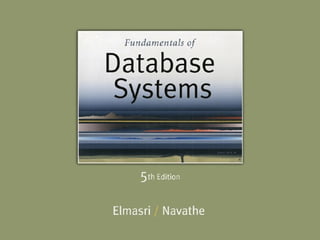The document discusses database system concepts and architecture. It covers topics such as data models, schemas, instances, the three-schema architecture, data independence, DBMS languages, interfaces, utilities, centralized and client-server architectures, and classifications of DBMSs. The three-schema architecture defines schemas at the internal, conceptual, and external levels to support data independence. DBMS languages include data definition languages to define schemas and data manipulation languages to retrieve and update data. Client-server architectures distribute the database system across network tiers, with specialized database, application, and interface servers.




















































